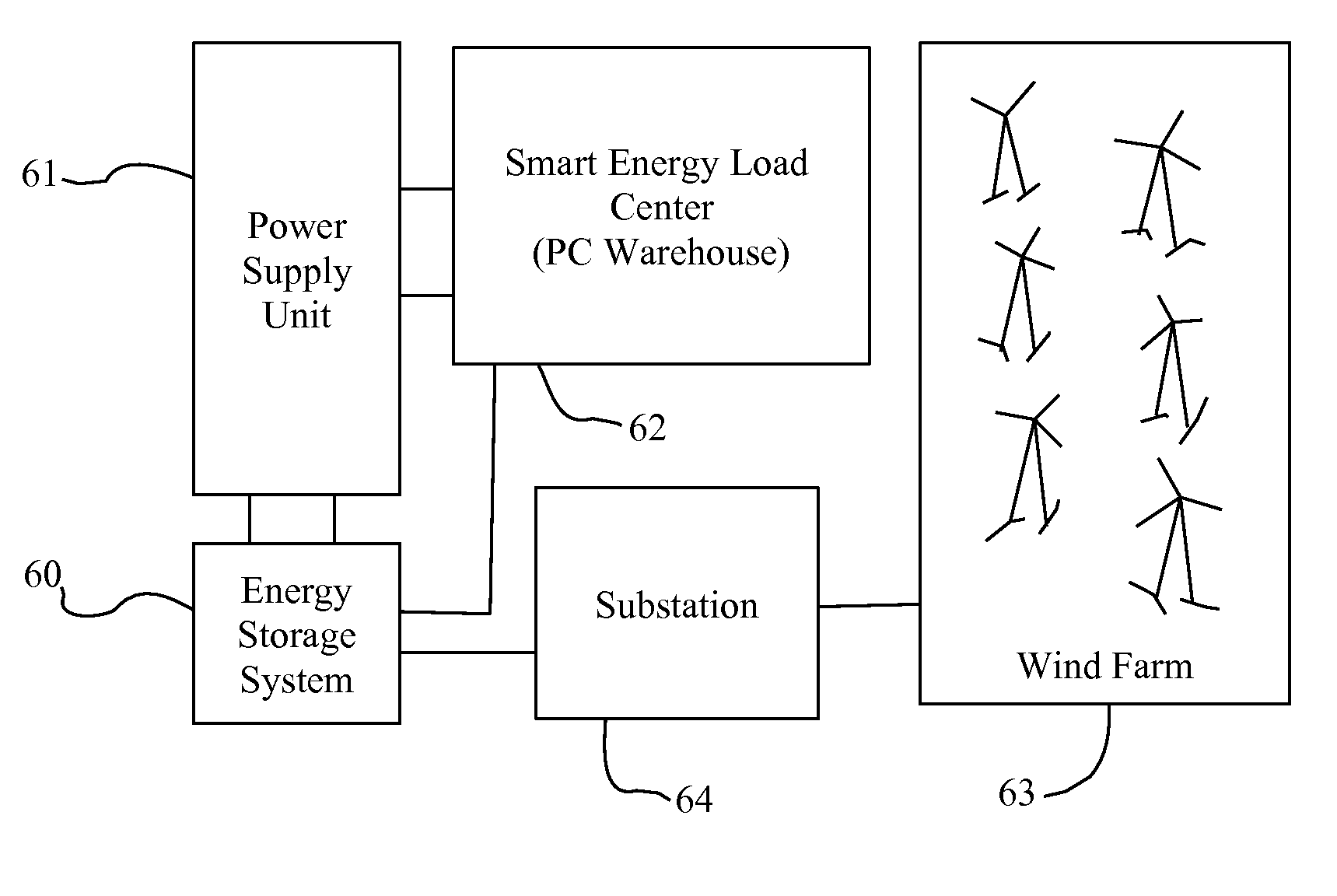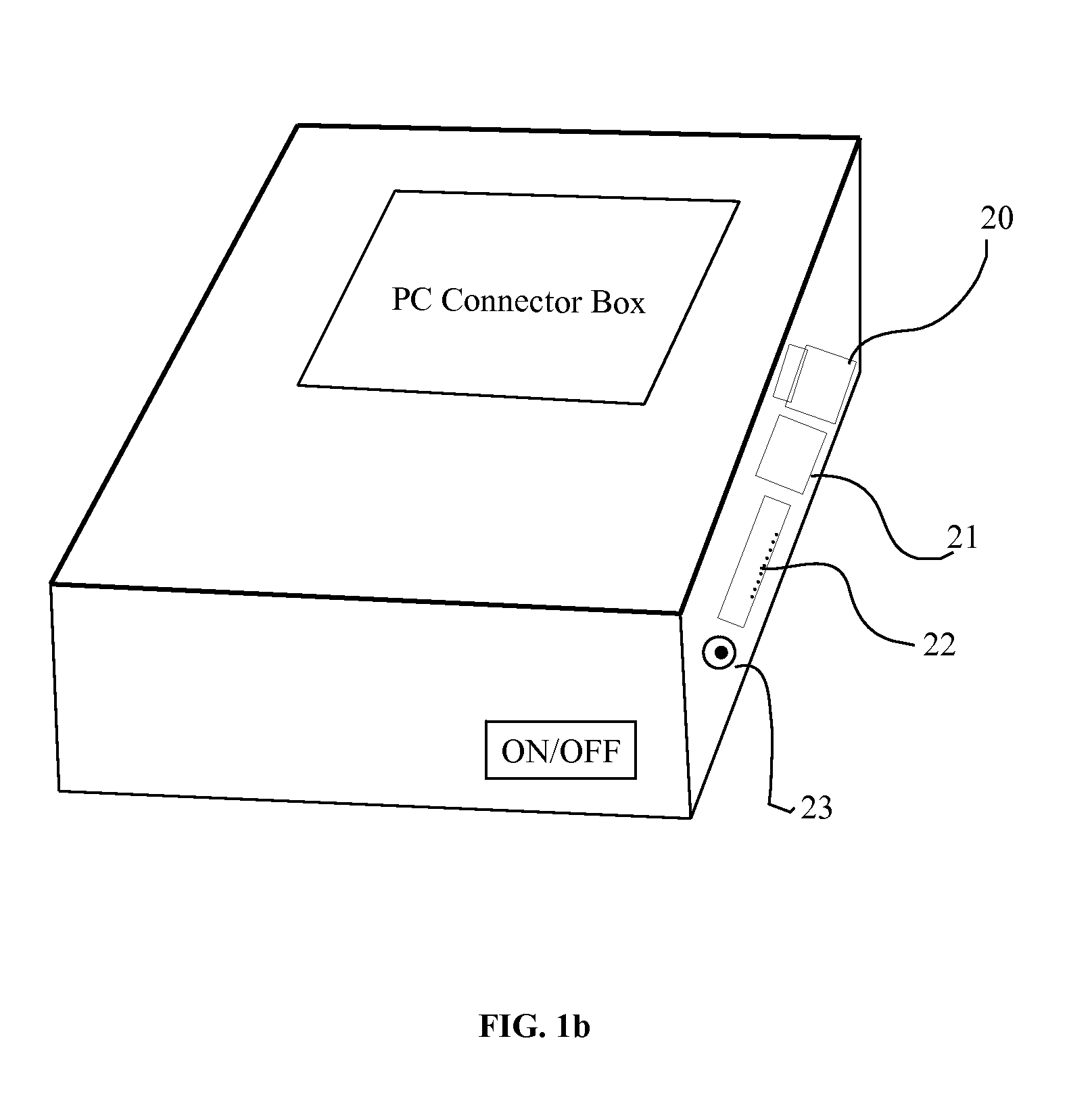Energy optimization system
a technology of energy optimization and energy generation, applied in the integration of power network operation systems, instruments, base element modifications, etc., can solve the problems of increasing transmission and distribution costs to consumers, inefficient energy available at the location of operation, and many significant hurdles in the wind energy industry
- Summary
- Abstract
- Description
- Claims
- Application Information
AI Technical Summary
Benefits of technology
Problems solved by technology
Method used
Image
Examples
Embodiment Construction
[0033]The traditional personal computer (PC) is strategically separated into two sets of parts. The first set of parts is the PC Connector Box, shown in FIGS. 1 (a, b, and c). The main function of the PC Connector Box is to provide the functionality to connect the PC user to the PC box (the second set of parts). Four aspects of the PC Connector Box are shown FIG. 1a. In FIG. 1a, a monitor / VGA port (10), a keyboard port (11), a mouse port (12), and an on / off power button (13) are shown. In FIG. 1b, an ethernet port (20), a universal serial bus (USB) port (21), a printer port (22), and a portable / chargeable battery plug-in (23) are shown. In FIG. 1c, the case (30) to hold these parts together, a miniature motherboard (31), a miniature central processing unit (CPU) (32), and a basic input / output system (BIOS) read-only-memory (ROM) location where lean operating system code resides (33). This PC Connector Box will be able to be connected to the internet, without requiring the usual moth...
PUM
 Login to View More
Login to View More Abstract
Description
Claims
Application Information
 Login to View More
Login to View More - R&D
- Intellectual Property
- Life Sciences
- Materials
- Tech Scout
- Unparalleled Data Quality
- Higher Quality Content
- 60% Fewer Hallucinations
Browse by: Latest US Patents, China's latest patents, Technical Efficacy Thesaurus, Application Domain, Technology Topic, Popular Technical Reports.
© 2025 PatSnap. All rights reserved.Legal|Privacy policy|Modern Slavery Act Transparency Statement|Sitemap|About US| Contact US: help@patsnap.com



